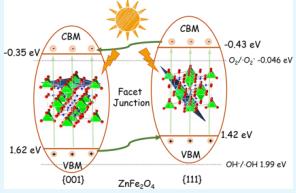
Environmental materials are formed by the intersection and integration of environment, materials, chemistry, physics, and other related fields, and are the use of the basic theory and knowledge of advanced materials to explore and solve the problems of refractory pollutants treatment and advanced detection technology of environmental pollutants faced in the field of environmental protection. The main research content includes the preparation theory and technology of various new environmentally friendly materials, environmental remediation materials, environmental monitoring materials, etc., and studies of their application performance and environmental coordination performance. Through interdisciplinary and cross-field methods, we study environmental science and technology problems encountered in the process of modernization and provide technical support and talent guarantee for related fields. To study the preparation, and in situ characterization of novel environmental materials and their application principles in environment and energy.
Efficient solar selling and photoelectric catalytic materials are proposed to construct multiple structures of spinel crystals as basic materials, and crystal faceting engineering has been proven to be a general method for adjusting the photocatalytic activity of semiconductors. However, the surface dependence and potential mechanism of spinel-type ZnFe2O4 in photocatalysis are still rarely explored. Here, ZnFe2O4 nanoparticles with different {001} and {111} surface exposures were successfully synthesized by simple hydrothermal methods. It was observed that the photocatalytic degradation performance of truncated octahedral ZnFe2O4 nanoparticles on gaseous toluene under the simultaneous exposure of {001} and {111} surfaces was better than that of other nanoparticles under visible light irradiation. The facet junction formed between the {010} and {100} surfaces is the reason for increased activity by separating photogenerated electrons. Photogenerated electrons and holes migrate to the {001} and {111} surfaces, respectively. Interestingly, the electron paramagnetic resonance capture results showed that two kinds of •O2− and •OH were abundantly present in the sample under visible light irradiation as the main reactive oxygen species involved in the photocatalytic degradation process. In addition, further studies have shown that {001} surfaces play a major role in activating photogenerated transient species H2O2 into •OH, which is conducive to improving the inherent photocatalytic activity. This work not only provides a promising strategy for adjusting photocatalytic performance through the synergistic effect of facet connection and specific facet activation but also broadens the application scope of facet engineering to have multiple effects.

Appl Catal B-Environ, 2013,142– 43, 80–88, IF = 19.503; Top 1
ACS Appl. Mater. Interfaces 2019, 11, 29004−29013, IF = 9.229; Top 1
Nanoscale, 2019, 11, 3877, IF = 7.79; Top 1
Journal of Colloid and Interface Science, 2019,554, 91–102, IF = 8.128
J. Mater. Chem. A, 2017, 5, 8909–8915, IF =12.732; Top 1
J. Mater. Chem. C, 2015, 3, 6025--6034, IF = 7.393; Top 1
Appl Catal B-Environ, 2013, 142–143, 80-88, IF = 19.503; Top 1
Langmuir, 2011, 27, 6, 3113-3120 , IF = 3.883; Top 1
Journal of Hazardous Materials 2018, 359, 186–193 , IF = 3.883; Top 1
ACS Appled Materials Interfaces 2019, 11, 29004−29013;, IF = 9.229; Top 1